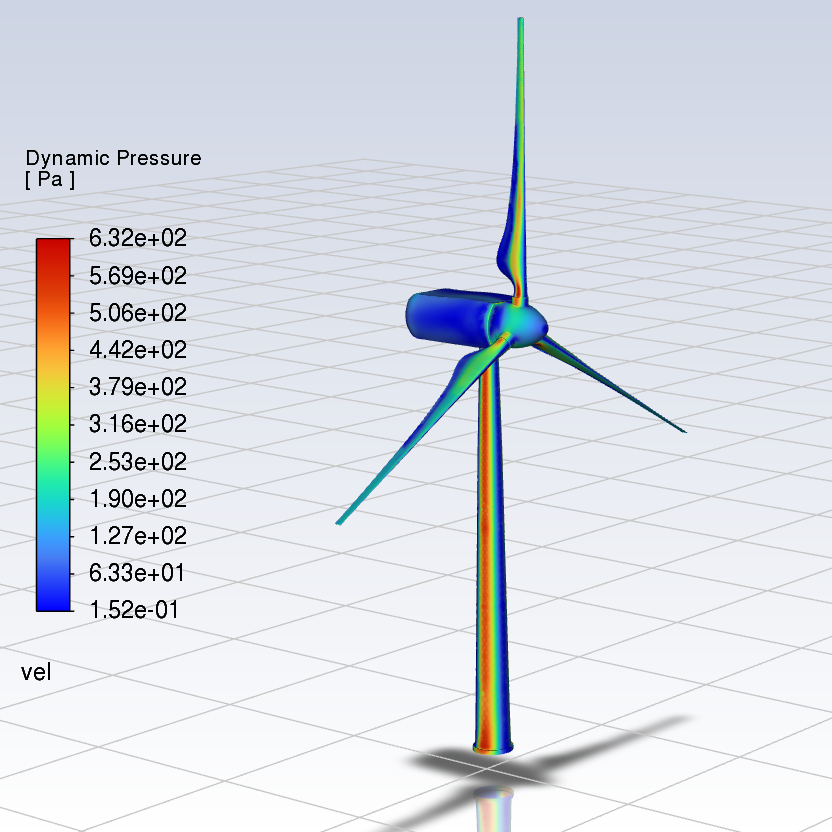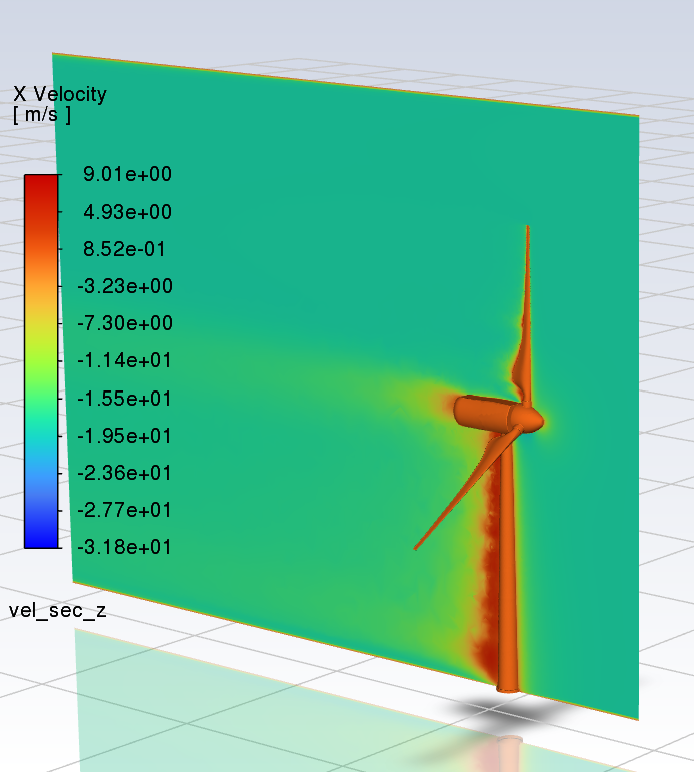The CFD simulation provides a comprehensive visualization of wind turbine aerodynamic behavior. The turbine demonstrates effective wind energy capture with well-distributed pressure loads and realistic wake development. These results can support further design optimization, particularly in blade shape and turbine spacing for wind farm configurations. Below are details of this case study.
1. Simulation Setup
- Wind Speed: 40 mph (≈17.88 m/s)
- Rotor Speed: 20 RPM
- Simulation Objective: To evaluate the aerodynamic performance of a horizontal-axis wind turbine (HAWT) under steady-state wind conditions using CFD.
- Key Variables Analyzed: Dynamic pressure distribution, velocity profiles, and wake effects.


2. Dynamic Pressure Distribution
- Observation:
From the dynamic pressure plot (Pressure.png), the highest dynamic pressure values (up to ~632 Pa) are concentrated around the leading edges of the blades and the tower base, especially near the rotor hub. - Interpretation:
These high-pressure zones indicate strong wind interaction and efficient energy capture by the blade surfaces. The pressure distribution is symmetric, suggesting good alignment with the incoming wind. Note that this is not necessarily true in real applications.

3. Velocity Pathlines
- Observation:
The velocity pathline visualization (Vel_pathline.png) shows smooth streamlines approaching the turbine and complex flow behavior in the wake region, with evident swirling patterns caused by blade rotation. - Interpretation:
Wake turbulence and velocity deficits behind the turbine are clearly visible. These are typical of wind energy extraction and should be considered for turbine placement in wind farms.

4. X-Velocity Section View
- Observation:
The X-velocity contour in the Z-section (XVel_Z_sec.png) highlights a sharp reduction in wind velocity downstream of the rotor. The wake zone shows a clear deficit region with velocities dropping to as low as -31.8 m/s, indicating recirculation or reverse flow zones. - Interpretation:
The turbine effectively extracts kinetic energy from the wind, evident from the lower velocities and wider wake immediately behind the blades and nacelle.


